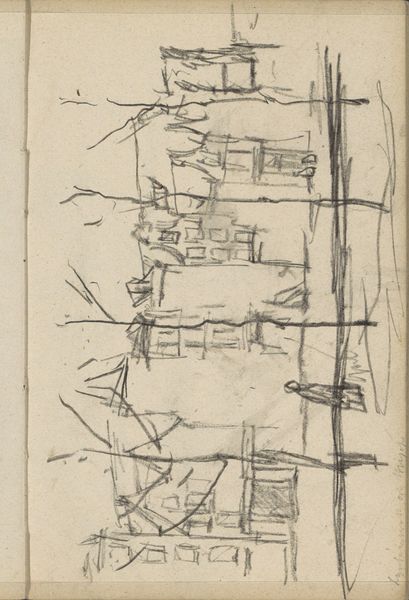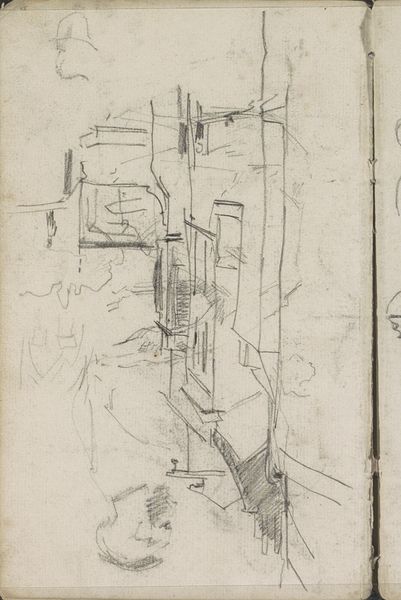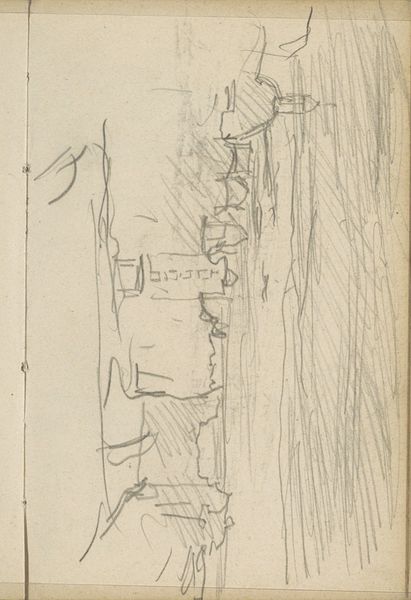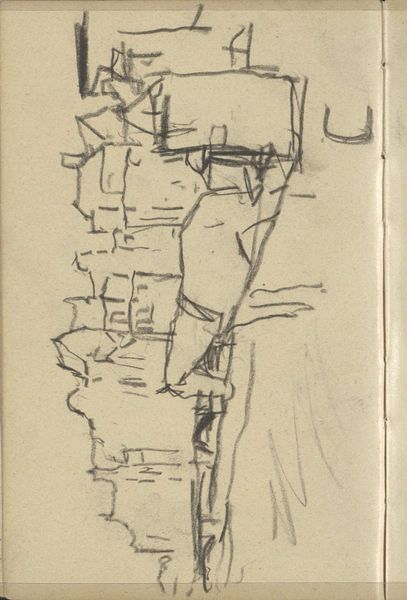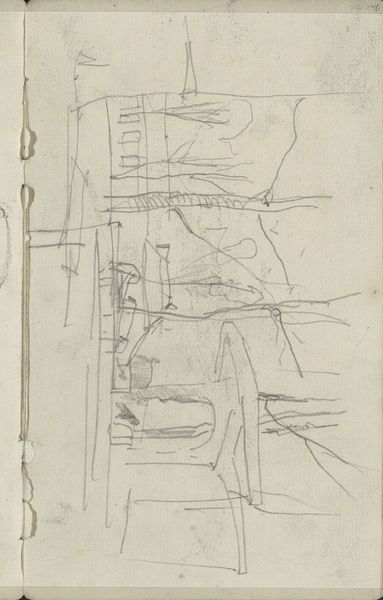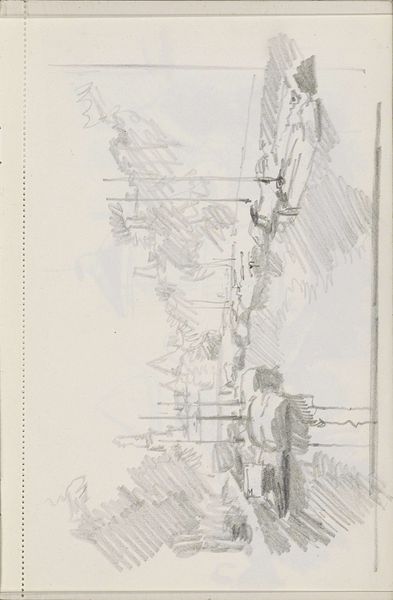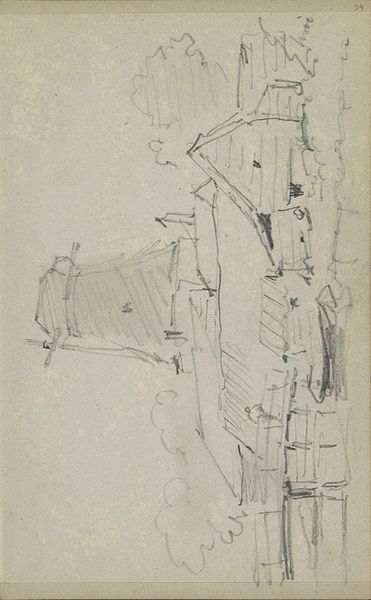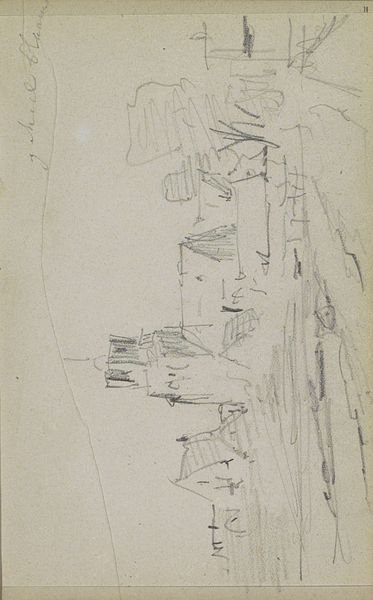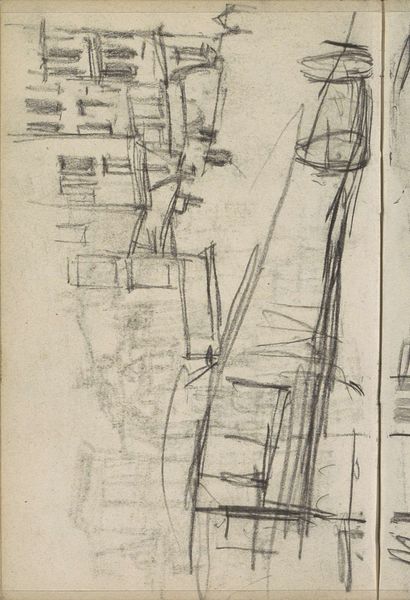
Gezicht op de sloop van huizen in de De Clercqstraat te Amsterdam c. 1906 - 1923
0:00
0:00
Copyright: Rijks Museum: Open Domain
Editor: This drawing, "Gezicht op de sloop van huizen in de De Clercqstraat te Amsterdam" by George Hendrik Breitner, was made sometime between 1906 and 1923 using graphite. It’s currently housed in the Rijksmuseum. There’s a somber feel to it, the harsh lines capturing the raw energy of urban demolition. What stands out to you as you look at this drawing? Curator: I see a city in transition, its old self being violently erased. Breitner’s quick, decisive strokes, almost like frantic scratches, evoke not just the physical destruction but the psychological impact of urban renewal. Note the recurring motif of skeletal buildings – do these represent merely a scene or a symbolic premonition of societal decay? Editor: That's interesting! So, beyond just documenting a demolition, could it be hinting at larger cultural anxieties? Curator: Exactly! Look at the contrast: the fragility of the graphite against the monumental act of destruction. What endures, and what fades away? Think about the symbolism of ruins. They speak to the ephemerality of human endeavor and the continuous cycle of creation and destruction, mirroring cycles within ourselves and society. How does the "street" become the stage on which urban change is not only enacted but also recorded? Editor: It’s like Breitner captured a moment of painful but necessary change. Curator: Precisely. The demolition becomes a metaphor. The drawing allows us to witness and, perhaps, to grapple with our own anxieties surrounding change and loss in the urban landscape. Editor: I’ll never look at another cityscape the same way. Curator: Hopefully, you will appreciate how symbols in cityscapes carry the weight of cultural memory.
Comments
No comments
Be the first to comment and join the conversation on the ultimate creative platform.
